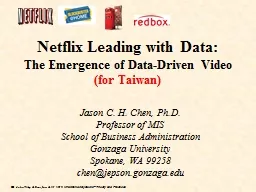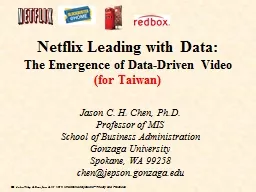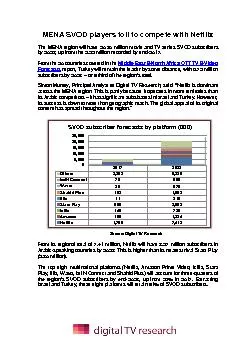PPT-The Netflix Prize
Author : marina-yarberry | Published Date : 2017-12-12
Sam Tucker Erik Ruggles Kei Kubo Peter Nelson and James Sheridan Advisor Dave Musicant The Problem The User Meet Dave He likes 24 Highlander Star Wars Episode
Presentation Embed Code
Download Presentation
Download Presentation The PPT/PDF document "The Netflix Prize" is the property of its rightful owner. Permission is granted to download and print the materials on this website for personal, non-commercial use only, and to display it on your personal computer provided you do not modify the materials and that you retain all copyright notices contained in the materials. By downloading content from our website, you accept the terms of this agreement.
The Netflix Prize: Transcript
Download Rules Of Document
"The Netflix Prize"The content belongs to its owner. You may download and print it for personal use, without modification, and keep all copyright notices. By downloading, you agree to these terms.
Related Documents














